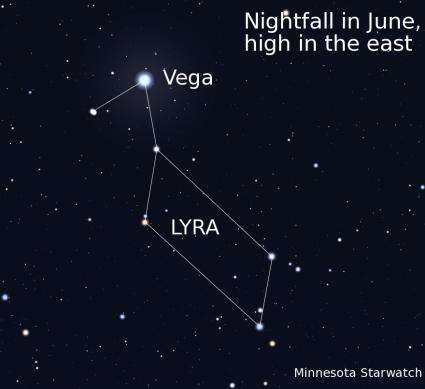Points North: Whitetail Encounter Draws A Snowy Curtain On 2010 Hunt
-
Sat, 11/27/2010 - 11:26am
Tweet
| Attachment | Size |
|---|---|
| Finalcut_PN_20101125.mp3 | 5.01 MB |
When deer season ends, so does my hunting. Deer season is the grande finale of my outdoor year, which begins in April as soon as I can wet a line in open water. Although I spend plenty of time outdoors during the cold months, my enthusiasm for winter hunting and ice fishing is limited.
If I haven’t killed a deer, I’ll hunt right through to the bitter end, sometimes finding success on the last day. This year, my friend was still looking for a buck, but my tag was filled. So the pressure, in essence, was on him and not me, though we were hunting equally hard.
Saturday started cold and gradually warmed as the day went on. We started out “over the hill,” several hundred feet above Lake Superior, where the snow was nearly a foot deep. At noon we switched gears and head back down the ridge, where there was less snow and, hopefully, more deer.
The good thing about hunting late in the season is you have little competition from other hunters. We saw no other hunters nor heard any distant shots where we hunted. Then again, on Saturday we didn’t see any deer.
Conditions changed overnight and we woke to an inch of new snow Sunday morning, enough to make for quiet sneaking and to see fresh tracks. More snow and freezing rain was forecast. We decided to hunt just the morning of the final day so my friend could drive down the North Shore in daylight.
After walking a quarter mile into the woods, we went our separate ways, agreeing to meet at noon or sooner if we heard the other guy shoot. I headed across familiar territory, moving fairly quickly—if taking a couple of steps and pausing for a minute or two can be described that way—looking for fresh deer sign.
I hunted for an hour before seeing fresh tracks, left by a lone deer headed south. Next I came upon the tracks of a buck headed west, the direction I was going. He was walking downwind, probably because he was looking for a bedding place. I followed behind, knowing my scent would likely reach the deer long before I did, but hoping he would then head in the direction of my friend.
The buck led me to the beds of two deer on the lip of a deep ravine, but judging from the departing tracks, it was difficult to determine if the buck I was following had made one of the beds. Instead of puzzling over sign left by deer that had already departed the vicinity, I kept moving forward, knowing I needed to eventually turn my path to hunt into the wind.
Crossing one ravine and then another, I came upon an ATV trail someone had blazed through the woods. I followed it in a direction that kept the wind in my face. Within the first 200 yards I crossed the tracks of two lone deer whose big feet and long strides indicated they were bucks, one of which was likely the buck I’d tracked earlier. Both appeared to be headed for points elsewhere and not in the direction of my friend.
The trail led through an open birch forest along the edge of a wide ravine. Often, I could see more than 100 yards, which is unusual in the north woods. The view was nice, but most likely the deer were sticking to heavy cover, such as the stand of balsam fir I could see across the way. So I crossed the valley, quietly sneaking up the opposing slope. Popping over the lip of the hill I stopped, looking carefully to see if I caught an unsuspecting whitetail by surprise. Glancing at my watch, I noticed the time was 11:21.
It took a while before I spotted what appeared to be a deer’s leg. Closer inspection with a rifle scope revealed two legs of a deer standing on a hillside about 70 yards away. Unfortunately, the rest of the animal’s body was obscured. I watched the animal for several minutes, but it never moved.
Slipping a call from my pocket, I made a soft bleat. The sound activated the deer, which took a couple of quick steps, then stopped. Again my view of everything above the legs was obscured. Looking carefully through the scope, I could occasionally discern an ear or the animal’s nose, but no more.
Large wet snowflakes started coming down, blurring my rifle scope with moisture so that I needed to occasionally wipe it to clear. Still the deer didn’t move. I tried the bleat call again, but this time the whitetail merely raised one foot and put it down. The animal couldn’t catch my scent, but it wasn’t curious enough to come toward me. If it would just come forward a couple of steps, I could see it better. We’d been staring at each other so long the falling snow was obscuring my footprints. Clearly it had become a matter of who was more patient, me or the deer.
A third bleat elicited no reaction from the whitetail, so I decided to slowly step forward, hoping for a better view. Before I could move, the deer suddenly made a turning bound and disappeared. Perhaps it caught my scent. Or maybe it could read my mind. The time was 11:53.
I walked over and checked out the whitetail’s tracks. It had been bedded beneath some balsams and likely stood up when I popped into view. Judging from the size of the hoofprints it was a young deer, perhaps a year-and-a-half-old buck. I didn’t bother to follow the running tracks and instead began the long hike back to the truck. My 2010 hunt was over, but it ended on a good note.
Airdate: November 26, 2010
Tweet






